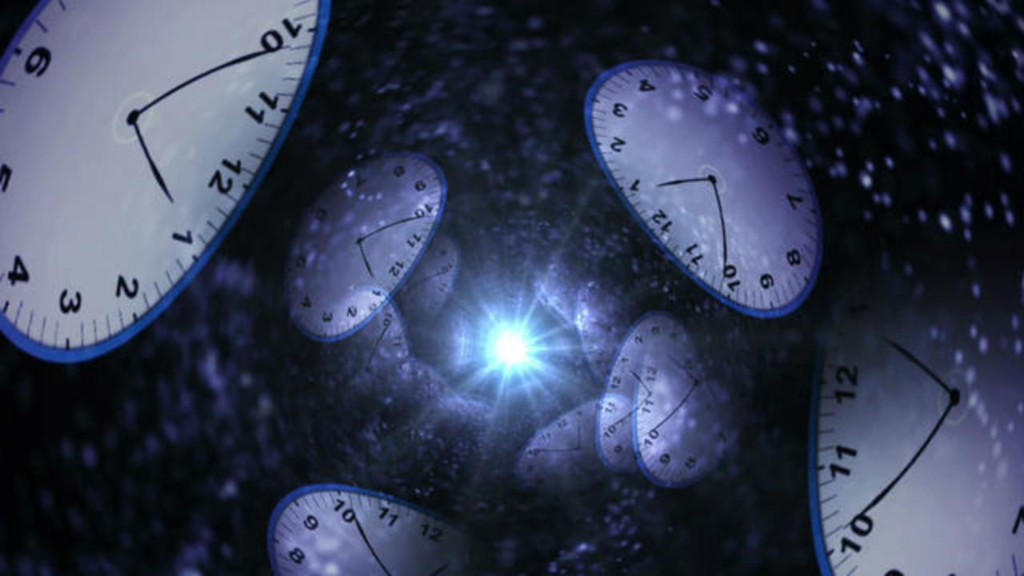Continúa después de la publicidad.
In the vast tapestry of the universe, where stars twinkle like ancient storytellers and galaxies dance in an endless waltz, lies a concept as intriguing as it is mysterious: space-time. This complex fabric, seamlessly weaving together the dimensions of space and time, forms the very stage upon which the cosmic play unfolds. As we embark on this celestial journey, we’ll explore how space-time not only holds the universe together but also bends and warps under the influence of gravity, creating phenomena that have captivated astronomers and scientists for generations. 🌌
Imagine standing on the shoulders of giants like Albert Einstein, who revolutionized our understanding of the cosmos with his theory of General Relativity. Einstein proposed that gravity is not just an invisible force pulling objects towards one another, but rather a curvature of space-time itself. This groundbreaking idea helps explain why planets orbit stars and why light bends as it passes massive celestial bodies. It’s a mind-bending concept that redefines our perception of reality, inviting us to rethink how we view the universe and our place within it.
Continúa después de la publicidad.
So, dear reader, are you ready to embark on a journey through the cosmic tapestry of space-time? As we explore this fascinating frontier, you’ll discover the hidden connections between time, space, and gravity, and how they shape the very essence of the universe. Let’s unravel the mysteries of space-time together and uncover the wonders that lie beyond the stars. 🌠
Understanding Space-Time: The Fabric of the Universe
Have you ever wondered what the universe is made of, beyond stars and planets? At its core, the universe is woven together by an intricate fabric known as space-time. This concept, popularized by Albert Einstein’s theory of general relativity, is the very essence of how our universe functions. But what exactly is space-time, and how does it warp the cosmos? 🪐
Continúa después de la publicidad.
What is Space-Time?
Space-time is a four-dimensional continuum that blends the three dimensions of space with the dimension of time. Imagine space-time as a vast, stretchy fabric that can be bent and twisted by the presence of mass and energy. This bending is what we perceive as gravity. For instance, when you place a heavy object on a trampoline, it creates a dip; similarly, massive bodies like stars and planets create curves in the fabric of space-time.
How Does Space-Time Warp?
The warping of space-time is a fundamental concept in understanding gravitational forces. Massive objects cause space-time to curve around them. This curvature affects the motion of other objects, essentially “telling” them how to move. It’s not just a theory — it’s something we observe. One of the most famous examples of space-time warping is the bending of light around massive objects, known as gravitational lensing. This phenomenon allows us to see galaxies that are far behind another galaxy, as the light bends around the massive foreground galaxy.
Why is Space-Time Important?

The concept of space-time is crucial for understanding the universe’s behavior on both grand and minuscule scales. It explains not only the movements of planets and stars but also the fundamental interactions between particles in quantum mechanics. Without space-time, our understanding of both the universe and the laws of physics would be incomplete.
Preguntas frecuentes
- Is space-time the same everywhere in the universe?
Space-time is affected by mass and energy, so it’s not uniform everywhere. Regions with massive objects like black holes have a highly warped space-time compared to the emptiness of intergalactic space. - Can we see space-time?
We cannot see space-time directly, but we can observe its effects, such as the gravitational pull on objects and the bending of light. - How does space-time affect time travel?
The warping of space-time opens theoretical possibilities for time travel. For example, the concept of wormholes suggests pathways through space-time that could connect distant parts of the universe almost instantaneously.
Examples of Space-Time Warping
Consider the GPS satellites orbiting Earth. These satellites must account for the warping of space-time caused by Earth’s mass. Their clocks tick slightly faster than clocks on Earth’s surface due to the reduced gravitational pull at their altitude. This discrepancy, although tiny, must be corrected to provide accurate positioning data.
Another intriguing example is black holes, which are regions of space where the warping of space-time is so extreme that nothing, not even light, can escape. Black holes offer a dramatic illustration of how massive bodies can warp the space-time fabric to an incredible extent. 🌌
As we delve deeper into the mysteries of space-time and its profound implications for our understanding of the universe, we are reminded of the endless possibilities that lie before us. The exploration of space-time not only enriches our scientific knowledge but also sparks our imagination and sense of wonder.
By continuing to unravel the complexities of this cosmic fabric, we open doors to new discoveries and insights that challenge our perceptions of reality and inspire us to push the boundaries of our knowledge even further.
So let us embrace the journey ahead with curiosity and enthusiasm, as we continue to unravel the secrets of space-time and unlock the marvels that await us beyond the stars. 🌌🌠
Conclusión
In conclusion, the exploration of “How Does Space-Time Work and Warp the Universe?” invites us to delve into the fundamental nature of our cosmos, unraveling the mysteries that govern the very fabric of reality. By understanding the dynamics of space-time, we gain insight into how the universe is structured and how it evolves, enriching our appreciation for the intricate dance of celestial bodies. This knowledge not only expands our scientific horizons but also fuels our curiosity and imagination, allowing us to ponder our place within this vast, ever-expanding universe.
As we journey through the concepts of relativity and the bending of space-time, we become more aware of the interconnectedness of all things. The bending of space-time, a cornerstone of Einstein’s theory of general relativity, reveals how mass and energy can influence the geometry of the cosmos, leading to phenomena such as black holes and gravitational waves. These insights inspire us to question what we perceive as reality and challenge us to think beyond the confines of our planet.
Reflecting on these profound ideas, we are reminded of the incredible capacity of the human mind to explore and understand the universe. This knowledge underscores the importance of continued exploration and study, as each discovery brings us closer to answering the age-old questions of existence.
Thank you for taking the time to explore this fascinating topic. Your curiosity and engagement contribute to a greater understanding and appreciation of the world we inhabit. Keep questioning, keep exploring, and never stop looking up.




